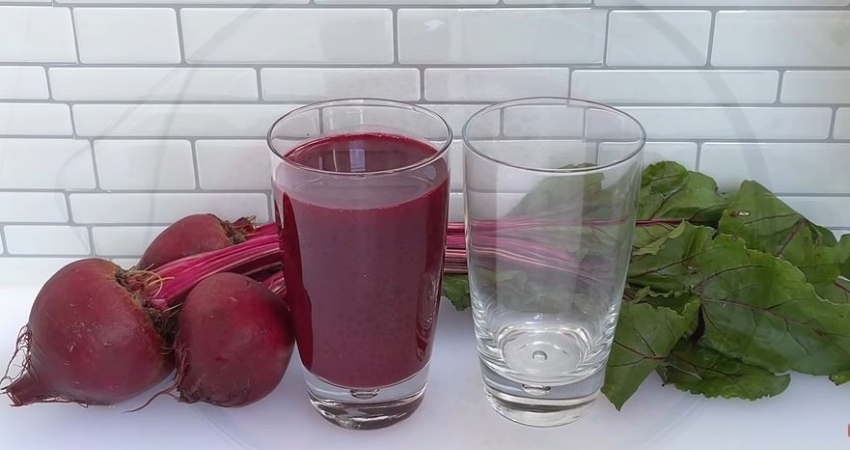Why Beetroot Juice Is Gaining Attention for Blood Pressure Support?
In recent years, beetroot juice has become a favorite among health enthusiasts, especially those looking for natural ways to manage high blood pressure (hypertension). It’s not just hype—it’s grounded in science. Beets are rich in dietary nitrates, which your body converts into nitric oxide, a compound that helps dilate blood vessels. This process improves blood flow and reduces vascular resistance, helping lower systolic and diastolic pressure naturally.
I started drinking beetroot juice in the mornings after my father’s cardiologist recommended it for his stage 1 hypertension. Within two weeks, we noticed his blood pressure readings dropped from 138/88 to around 124/80—without changing anything else in his routine.
What Makes Beets a Natural Blood Pressure Regulator?
The magic lies in inorganic nitrates. A 250 ml glass of fresh beetroot juice contains approximately 250–300 mg of nitrates. When you drink it, your saliva breaks nitrates into nitrites, which then become nitric oxide in your stomach. Nitric oxide relaxes arterial walls, reducing the pressure your heart needs to pump blood through vessels.
Clinical studies have confirmed this effect. For instance, a 2015 study in Hypertension journal found that participants who drank beet juice daily saw an average drop of 7.7 mmHg systolic and 5.2 mmHg diastolic—numbers equivalent to some first-line medications.
Other Nutritional Powerhouses in Beet Juice
Beyond nitrates, beetroot juice is loaded with potassium, magnesium, folate, and antioxidants like betalains. Potassium balances sodium levels, directly helping to manage fluid retention and prevent blood pressure spikes. Magnesium helps relax smooth muscles in blood vessels, easing tension and promoting better circulation.
These nutrients work synergistically. For example, folate reduces homocysteine, a compound linked to arterial stiffness. Meanwhile, betalains fight oxidative stress, which damages blood vessels over time. It’s a well-rounded combo for long-term cardiovascular support.
How Much Beet Juice Should You Drink for Effectiveness?
Clinical evidence suggests 250–500 ml (1–2 cups) of raw beet juice daily can effectively lower blood pressure in adults. However, you should always start slow—especially if you’re new to nitrates—as sudden vasodilation can cause temporary dizziness or headaches.
In my experience, 150 ml in the morning on an empty stomach was enough to feel energized without any side effects. Beets also have natural sugars, so if you’re diabetic or watching sugar intake, stick with no more than 1 cup daily.
When to Drink Beetroot Juice for Maximum Impact?
Timing matters. Nitric oxide levels peak about 2–3 hours after drinking beetroot juice. So if you’re targeting blood pressure or preparing for exercise, aim to consume it 2 hours beforehand. This is especially useful for morning hypertension or endurance training.
Athletes often use it as a pre-workout drink due to improved oxygen efficiency and stamina. For hypertension support, consistency is key—drinking it daily, not occasionally, delivers the most measurable results.
Potential Side Effects and How to Handle Them?
One of the most common effects is beeturia, where your urine turns pink or red—totally harmless. However, excessive beet juice may cause a drop in calcium levels or lead to kidney stones due to oxalate content. If you have a history of calcium oxalate stones, consult your doctor before making beet juice a regular part of your routine.
Personally, I balance my beet juice with hydrating cucumber or celery juice to reduce oxalate load and increase mineral absorption. A touch of lemon also helps with oxalate binding and adds flavor.
Juicing Method: Raw vs Cooked Beets for Blood Pressure
Raw beets have more bioavailable nitrates than cooked ones. Cooking destroys up to 30–40% of nitrate content. For juicing, choose fresh, firm, organic beets. Wash, peel, and cut them into chunks. Use a slow juicer to preserve enzymes and reduce oxidation.
If using a blender, add half a cup of filtered water and strain the juice through a cheesecloth for smooth texture. For a gentler taste and enhanced benefits, I like to mix beets with carrot, apple, or ginger, which also support heart health.
Smart Additions to Boost Heart Benefits
- Celery juice: Adds more nitrates and potassium.
- Cucumber juice: Hydrating and cooling, balances beet’s earthiness.
- Ginger: Natural anti-inflammatory, improves circulation.
- Lemon: Enhances absorption of nutrients and cuts sweetness.
Combining beets with these ingredients not only improves flavor but also creates a synergistic cardiovascular tonic. It’s like building a daily defense system against hypertension—naturally.
Storage Tips for Beet Juice (Without Losing Nutrients)
Beet juice oxidizes quickly. For best results, drink it within 30 minutes of juicing. If storing, use an airtight glass bottle and refrigerate immediately. It can last up to 48 hours, but nitrate degradation begins after 12–16 hours.
Avoid plastic containers—they can leach chemicals and reduce freshness. I usually batch 2 servings in glass bottles and mark them with time labels, so I don’t drink old juice by mistake.
Key Takeaways!
Beetroot juice isn’t just a trend—it’s backed by nutritional logic, peer-reviewed science, and personal experience. If you’re looking for a natural, drug-free way to support blood pressure and overall heart health, this deep-red juice offers a smart starting point.
Just one note from my journey: consistency trumps quantity. A small, measured daily dose worked better than random larger servings. And combining it with healthy sleep, less salt, and daily walks created noticeable results in under three weeks.
More Related Blogs to Read:
Carrot and beet juice
Health benefits of carrot and beet juice
Beetroot and orange juice
Beetroot and apple juice
Method to make juice without juicer

